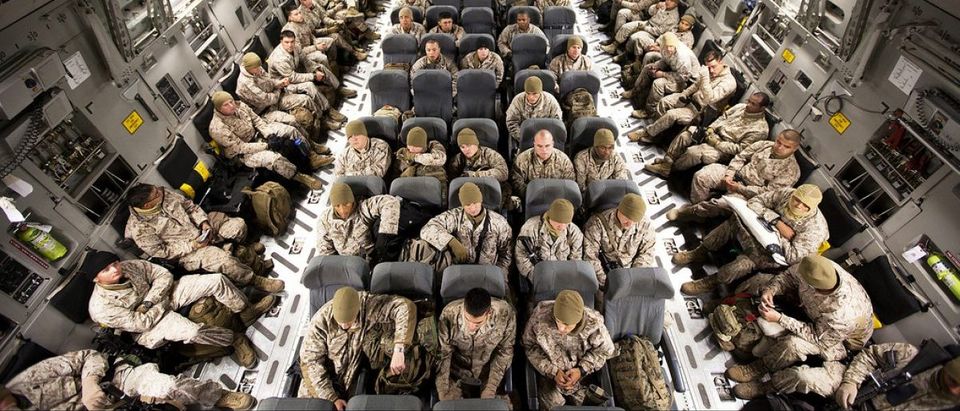Secretary of Defense James Mattis will likely increase the number of troops in Afghanistan by nearly 4000, the Associated Press reported.
President Donald Trump gave Mattis the authority to decide troop levels in Afghanistan at an Oval Office meeting Tuesday. Mattis confirmed the authority before Congress Wednesday, but stressed that any troop increase would be accompanied by the rollout of a new strategy to win America’s longest war. The additional number would put the total number of troops in Afghanistan at approximately 12,500.
The bulk of the troops will engage in the ongoing U.S. military effort to train, advise, and assist the Afghan National Security Forces in the fight against the Taliban, according to the AP’s source. The remainder of the additional forces will participate in counter-terrorism missions against Taliban insurgents and the Islamic State terrorist group that operates in the eastern part of the country.
Both CENTCOM commander Gen. Joseph Votel and U.S. Forces Afghanistan commander Gen. John Nicholson have said that they need a few thousand more troops to more effectively train, advise, and assist the Afghan forces. Nicholson indicated before Congress that more troops would allow him to deploy troops closer to the front lines, and embed advisors at lower levels of the chain of command within the Afghan forces.
“We’re talking now about putting what we call NATO air support, down at the brigade level, so when they are in contact, the high ground is now going to be owned by the Afghans. It’s a fundamental change to how we bring our … real superiority in terms of air support to help them. In other words, we’re not talking about putting our troops on the front line,” Mattis explained regarding forthcoming changes to the Afghan review.
The Afghan National Security Forces however are beset by corruption and are taking devastating losses, and it is unclear what additional advisors can realistically do to turn the army into an autonomous fighting force. The U.S. Special Inspector General for Afghan Reconstruction noted in late April that the security force’s casualties continue to be “shockingly high.” The report highlighted that 807 Afghan troops were killed in just the first six weeks of 2017, and that nearly 35 percent of the force chooses not to re-enlist each year.
The report continued that Afghan forces face “many problems: unsustainable casualties, temporary losses of provincial and district centers, weakness in logistics and other functions, illiteracy in the ranks, often corrupt or ineffective leadership, and over-reliance on highly trained special forces for routine missions.”
Nicholson has acknowledged the shortcomings of the Afghan National Security Forces in the past but said in 2016, “we’re trying to build an airplane while in flight, OK? So they’re fighting a war while we’re trying to build an army. This is very hard.”
Mattis insisted before Congress that any troop increase will be paired with a broader political strategy to force reconciliation with the Taliban movement, saying “we’re not looking at a purely military strategy.” Reconciliation would entail the Taliban dropping their armed insurrection against the Afghan government and joining the political process.
The Taliban, however, are having their best year ever in Afghanistan, controlling more territory than any time since the U.S. invasion in 2001. Mullah Akhunzada, the insurgent movement’s leader, has ruled out political reconciliation until the U.S. withdraws all its forces.
Follow Saagar Enjeti on Twitter
Send tips to saagar@dailycallernewsfoundation.org.
Content created by The Daily Caller News Foundation is available without charge to any eligible news publisher that can provide a large audience. For licensing opportunities of our original content, please contact licensing@dailycallernewsfoundation.org.


